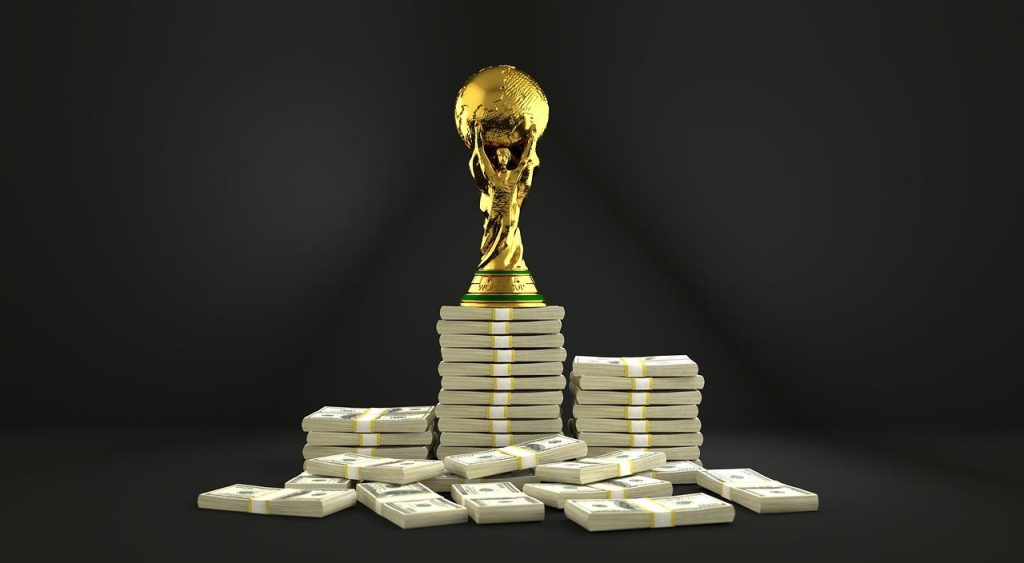When two soccer powerhouses like the United States and Mexico face off, fans expect the brightest stars lighting up the pitch. Yet, as the Gold Cup unfolds, notable absences have left many wondering: why aren’t some of the biggest names-like Christian Pulisic-wearing their national colors? This article delves into the strategic decisions, club commitments, and broader dynamics shaping rosters, explaining why top-tier talent is sitting out one of CONCACAF’s most celebrated tournaments. Behind every benching or withdrawal lies a story, and here, we uncover the factors reshaping the landscape of this fierce rivalry.
The Strategic Choices Behind Star Player Absences
In the modern landscape of international soccer, decisions surrounding player availability are never taken lightly. National team coaches and management are increasingly viewing tournaments like the Gold Cup not only as a battleground for regional supremacy but also as a platform for strategic development. Opting to rest key athletes such as Christian Pulisic signals a broader approach where longevity and peak performance in global fixtures take priority over immediate glory. This tactical choice reflects an understanding of player workload management, ensuring stars remain fresh and injury-free for critical World Cup qualifiers and major international stages.
The ripple effects of such strategies are multifaceted, involving:
- Youth Integration: Allowing emerging talents to gain invaluable experience under competitive pressure.
- Tactical Flexibility: Experimenting with diverse formations and player roles to enrich the squad’s adaptability.
- Injury Prevention: Minimizing the risk of burnout or long-term injury by managing minutes for star players.
- Team Chemistry Development: Fostering cohesion among lesser-known squad members, which can translate into collective resilience.
Ultimately, the calculated absence of marquee names is less about sidelining talent and more about sculpting a robust and versatile team capable of sustained success well beyond the confines of the Gold Cup.
Analyzing the Impact on Team Dynamics and Performance
The absence of high-profile players such as Christian Pulisic undeniably reshapes the internal fabric of the team. With established leaders sidelined, the dynamic shifts, often compelling lesser-known talents to step into pivotal roles. This recalibration can spark a fresh wave of energy and camaraderie, fostering a more collective spirit where every player feels empowered. However, it also places added pressure on emerging stars, who must quickly adapt to heightened expectations without the usual guiding presence of veteran teammates.
From a performance standpoint, adjustments in playstyle and strategic approach become necessary. Coaches and players alike must innovate to compensate, embracing a more experimental or risk-averse mindset depending on the squad’s evolving chemistry. Key factors influencing this include:
- Leadership emergence: New leaders arise, reshaping communication flows on and off the pitch.
- Team cohesion: Opportunity for increased trust-building among younger or less experienced players.
- Strategic flexibility: Shift toward adaptable formations that maximize the strengths of available personnel.
Ultimately, these internal adjustments can produce unexpected benefits, revealing depth and resilience. While the absence of star power might initially be seen as a setback, it often paves the way for a more balanced and unified team poised to surprise both fans and critics alike.
National Team Priorities Versus Gold Cup Ambitions
Balancing the ambitions of the Gold Cup with the broader objectives of the national team often requires difficult decisions from the coaching staff. While the Gold Cup is a prestigious tournament, it is also viewed as an opportunity to experiment with emerging talent and manage player workloads ahead of more critical competitions like World Cup qualifiers and the tournament itself. Coaches prioritize long-term squad development and player fitness, sometimes at the expense of immediate glory, resulting in key stars such as Christian Pulisic sitting out. This strategic approach ensures that players are fresh and fully prepared for matches that have greater stakes on the international stage.
Key reasons influencing roster choices include:
- Injury prevention: Shielding marquee players from minor knocks that could escalate during intense tournament play.
- Player development: Offering younger players vital exposure to international competition under less pressure.
- Scheduling conflicts: Navigating club obligations and congested fixtures to retain player commitment long-term.
- Strategic focus: Reserving top talent for tournaments that offer direct qualification opportunities or higher prestige.
Recommendations for Balancing Player Commitments and Tournament Goals
Striking the right balance between player commitments and the overarching goals of a tournament requires a nuanced approach that respects both individual well-being and team aspirations. National team coaches and organizers should prioritize flexible scheduling to accommodate players’ club responsibilities, ensuring they arrive fit and mentally prepared. Additionally, fostering open communication channels between clubs and national federations can facilitate smoother player availability, minimizing the fatigue and injury risks that often lead to key stars sitting out.
Equally, thoughtful roster composition can alleviate pressure on standout players while bolstering team chemistry. This involves:
- Incorporating emerging talents who can shoulder responsibility and gain invaluable experience.
- Rotating veteran presence to maintain leadership without overburdening individual athletes.
- Establishing clear short-term objectives aligned with long-term development, so the team thrives regardless of who’s on the pitch.
Such strategies ultimately enhance competitive integrity, ensuring tournaments showcase not just star power, but cohesive and resilient squads.
As the Gold Cup unfolds without the familiar faces of Christian Pulisic and other marquee stars, the tournament takes on a new dimension-one where emerging talent and strategic decisions define the narrative. While the absence of these top players may initially surprise fans, it underscores the evolving priorities within both the USA and Mexico camps, balancing between club commitments, player development, and long-term vision. Ultimately, this edition of the Gold Cup serves as a reminder that soccer’s story is never just about individual names, but about the ever-shifting landscape of a sport that continues to grow in thrilling, unpredictable ways.


